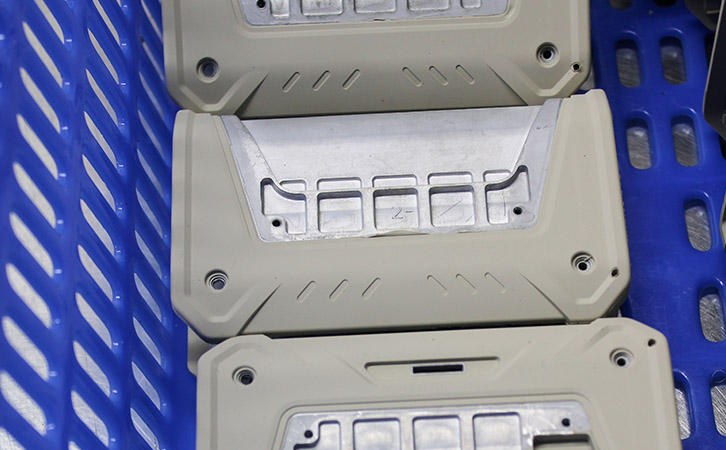The following is an analysis of the production process and core advantages of liquid silicone rubber (LSR) coated metal shells
1、 Production process (5 key steps)
Metal pretreatment
Cleaning: The metal casing undergoes ultrasonic wave cleaning, plasma treatment, or chemical coating (such as primer) to enhance the adhesion of silicone.
Preheating: Preheat metal parts to 80-120 ℃ (reduce shrinkage stress caused by temperature difference during injection molding).
mould design
Split mold structure: Adopting a precision dense mold embedded component system, the metal parts are precisely positioned within the mold cavity (tolerance ± 0.05mm).
Exhaust groove: Avoid the formation of bubbles when wrapped in silicone.
Liquid silicone injection molding
Two component injection: Liquid silicone gel is injected into the mold through a metering pump and cured at high temperatures (usually 120-200 ℃).
Coating pressure: High pressure (50-150 bar) ensures that the silicone completely wraps around the metal edge, forming a mechanical interlocking structure.
Secondary curing
Post drying treatment: 30-60 minutes at 180 ℃ to increase the crosslinking density of silicone and enhance its physical properties.
Quality inspection and post-processing
Tensile testing: testing the peel strength between silicone and metal.
Deburring: Freeze trimming or laser cutting to remove excess glue.

2、 Core advantages (compared to traditional craftsmanship)
Ultimate sealing performance
Silicone seamlessly wraps around metal, with a waterproof rating of IP68 (suitable for underwater devices and outdoor sensors).
Shock absorption and impact resistance
The silicone layer absorbs more than 80% of mechanical vibrations (protecting metal internal precision components).
Resistant to end environment
Silicone is resistant to temperature differences of -50 ℃~250 ℃, and metal is corrosion-resistant (for automotive engine compartment components).
Touch&Safety Upgrades
Matte/anti slip texture on the surface, excellent insulation performance (handle, power tool grip)


